- Diverse Regional Flavors of Nepali Soups and Stews
- Rich Culinary Heritage of Nepali Soups and Stews
- Health and Nutrition in Nepali Soups and Stews
- Variety of Ingredients in Nepali Soups and Stews
- Cooking Techniques in Nepali Soups and Stews
- Suitable for All Skill Levels: Nepali Soups and Stews
- Experience Nepal’s Flavors at Home
Nepal, a land of rich cultural and geographical diversity, offers an enticing array of culinary delights, particularly in the realm of soups and stews. These dishes are not just a testament to Nepali culinary expertise but also a reflection of the country's varied topography and cultural mosaic. From the hearty Thukpa in the Himalayas to the tangy Aloo Tama in the Kathmandu Valley, and from the nutritious Bhang Ko Tarkari in the far west to the comforting Dhido in the mid-western hills, Nepali soups and stews provide a flavorful journey through the heart of Nepalese tradition and hospitality. This blog explores these unique and flavorful dishes, offering a glimpse into the soul-warming cuisine of Nepal.
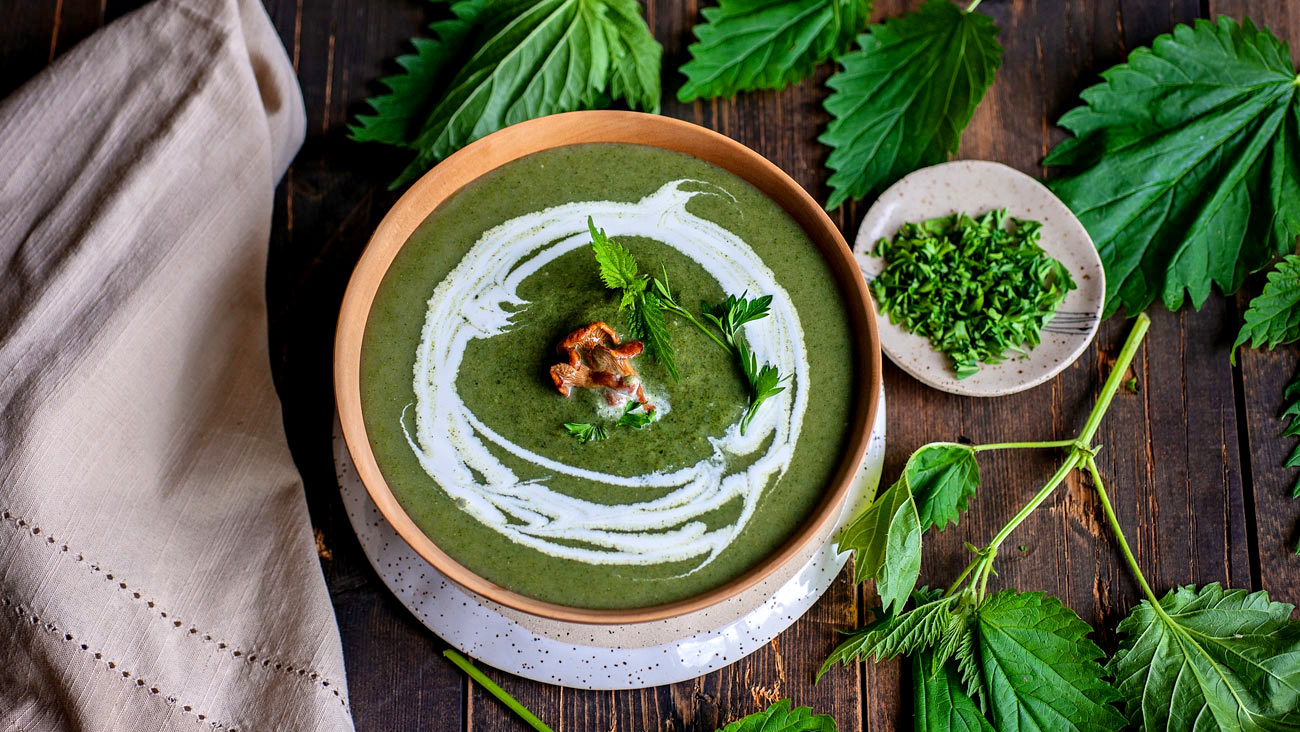
At Kathmandu Cooking Academy, we pride ourselves as the premier destination for those looking to explore the rich and diverse world of Nepali soups and stews. Our expertise in traditional Nepalese cuisine, combined with a passion for culinary excellence, makes us the best choice for anyone eager to delve into the flavors of Nepal. Whether you're a beginner or an experienced cook, our tailored cooking classes offer hands-on experience in preparing authentic and fast and flavorful dishes. Join us at Kathmandu Cooking Academy to discover the secrets of Nepali cooking and master the art of creating these soul-warming, traditional recipes right in your kitchen.
Diverse Regional Flavors of Nepali Soups and Stews
The culinary landscape of Nepal is a vibrant tapestry, rich with diverse regional flavors, especially evident in its soups and stews. Each region brings its unique ingredients and cooking styles to these dishes, creating a plethora of flavors that are distinctly Nepali yet remarkably varied.
Himalayan Highlands: Thukpa and Thenthuk
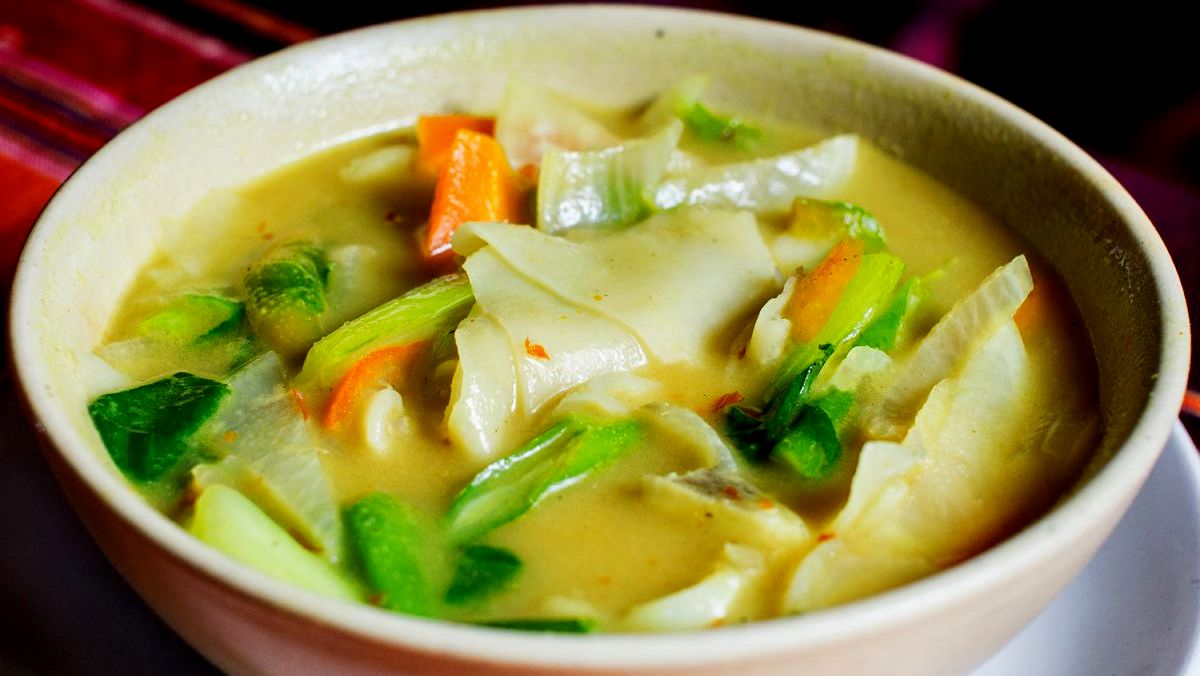
- Characteristics: In the Himalayan regions, soups like Thukpa and Thenthuk offer warmth and sustenance. These noodle-based soups often feature meat and are seasoned with local Himalayan herbs.
- Influence: Tibetan influences are strong here, reflected in the use of hearty ingredients and robust flavors.
Kathmandu Valley: Kwati and Aloo Tama
- Specialties: The Kathmandu Valley is famous for Kwati, a soup made of mixed sprouted beans, and Aloo Tama, a unique combination of potatoes and bamboo shoots.
- Cultural Significance: These dishes are not just culinary delights but also part of the cultural fabric, often associated with festivals and celebrations.
Terai Region: Tarul Ko Jhol and Simi Ko Dal
- Flavors: The Terai region, with its fertile plains, offers vegetable-rich soups like Tarul Ko Jhol (yam stew) and Simi Ko Dal (black-eyed pea soup).
- Agricultural Influence: The abundance of fresh produce in this region is reflected in the light, yet flavorful nature of its soups and stews.
Western Nepal: Jwano Ko Jhol and Bhang Ko Tarkari
- Herbal and Nutritious: In Western Nepal, Jwano Ko Jhol, a herbal soup with cumin seeds, and Bhang Ko Tarkari, a hemp seed stew, highlight the use of local herbs and seeds, known for their health benefits.
Mid-Western Hills: Dhido and Gundruk Ko Jhol
- Traditional Fare: The mid-western region is known for Dhido, a traditional non-fermented bread, served with Gundruk Ko Jhol, a soup made from fermented leafy greens, showcasing traditional Nepalese fermentation techniques.
This rich diversity in soups and stews across Nepal's regions not only showcases the country's vast array of flavors and ingredients but also tells a story of its geographical and cultural diversity. Each bowl offers a taste of the local terrain and traditions, making Nepali soups and stews a fascinating culinary journey.
Rich Culinary Heritage of Nepali Soups and Stews
Nepal's soups and stews are a testament to the country's rich culinary heritage, a legacy that has evolved over centuries and been influenced by both the diverse geography of the region and its complex cultural tapestry. This heritage is vividly reflected in the variety and depth of flavors found in these traditional dishes.
Melting Pot of Flavors
- Cultural Influences: Nepal's strategic location between India and Tibet has led to a blending of culinary influences, creating a unique fusion evident in its soups and stews. Ingredients like spices from India and noodle-based recipes from Tibet are seamlessly integrated into Nepali cuisine.
Use of Local Ingredients
- Diverse Terrain: The varied terrain of Nepal, from the high Himalayas to the lush Terai plains, provides a bounty of unique ingredients. Herbs grown in the Himalayan foothills, vegetables from the fertile Terai, and grains from the hilly regions all find their way into these dishes.
- Seasonal and Fresh: Nepali soups and stews often feature seasonal and locally sourced ingredients, ensuring freshness and a connection to the land.
Traditional Cooking Techniques
- Fermentation and Sun-Drying: Techniques like fermentation, used in making Gundruk (fermented leafy greens), and sun-drying, as seen in Masyaura (lentil balls), are integral to Nepali cooking, adding depth and complexity to the flavors.
- Slow Cooking: Many Nepali stews are slow-cooked, a method that allows the ingredients' flavors to meld beautifully, creating rich and hearty dishes.
Celebration of Nepali Culture
- Festive Foods: Soups like Kwati, made of mixed beans, are not just culinary treats but also part of Nepal's festive cuisine, associated with celebrations and gatherings.
- Culinary Storytelling: Each dish has a story to tell, reflecting the history, geography, and traditions of its region. For example, Thukpa is not just a soup but a narrative of Himalayan life and culture.
The soups and stews of Nepal are more than just meals; they are a celebration of the nation's rich culinary heritage. Each dish is a mosaic of flavors and traditions, offering a delicious insight into the heart of Nepalese culture and history.
Health and Nutrition in Nepali Soups and Stews
Nepali soups and stews are not just a feast for the taste buds; they also embody a rich tapestry of health and nutrition, reflecting the traditional wisdom of using wholesome, natural ingredients. These dishes are a testament to Nepal's understanding of food as a vital source of nourishment and well-being.
Nutrient-Dense Ingredients
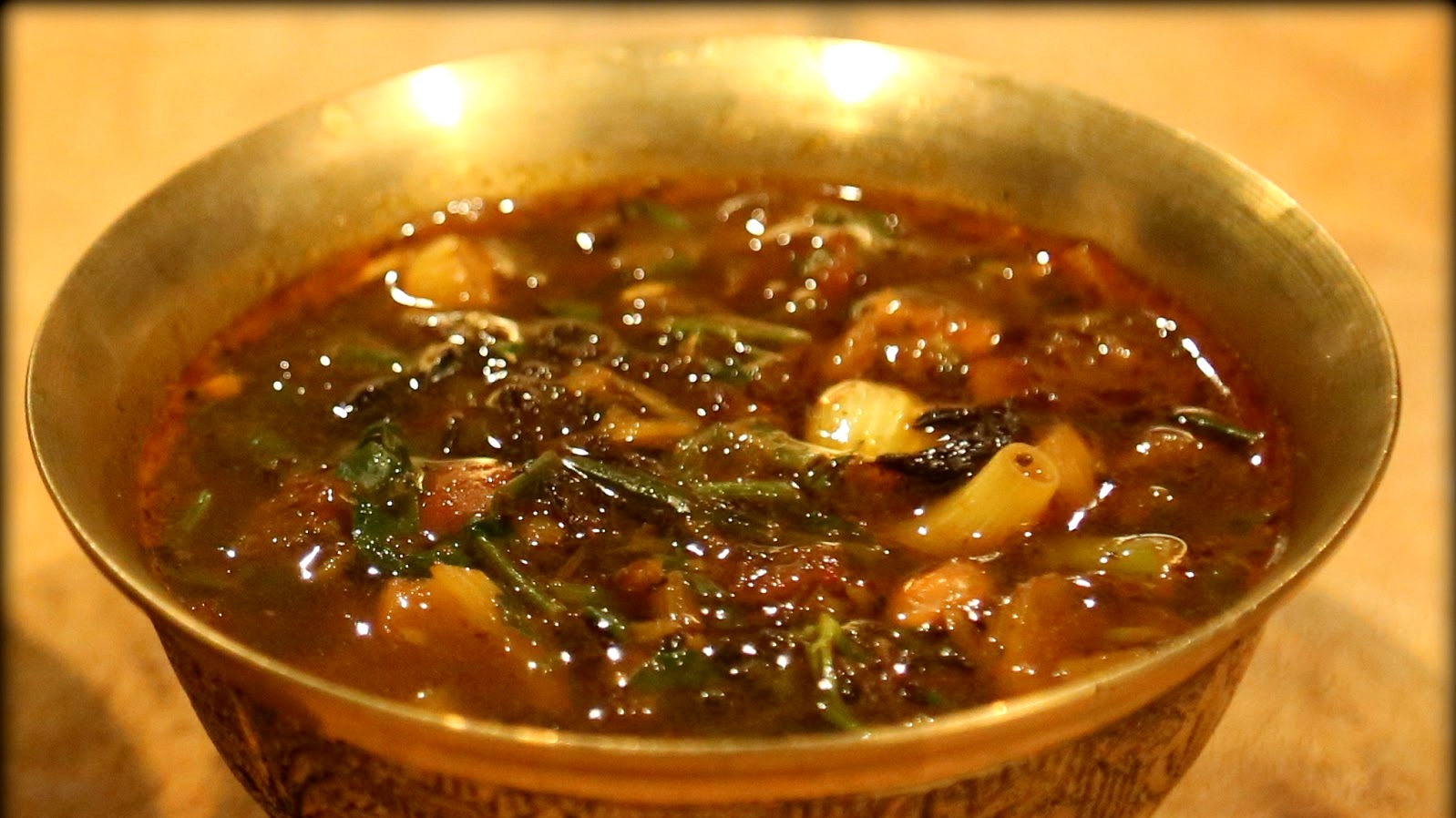
- Legumes and Beans: Soups like Kwati, made from a mix of nine different beans, are packed with protein, fiber, and essential nutrients, offering a balanced and healthful meal option.
- Green Leafy Vegetables: Dishes such as Gundruk Ko Jhol, made from fermented greens, are rich in vitamins, minerals, and antioxidants, supporting overall health and immunity.
Healing and Medicinal Properties
- Herbal Soups: Jwano Ko Jhol, a soup made with cumin seeds, is known for its medicinal properties, often served to aid digestion and alleviate cold symptoms.
- Nettle Soup: Sisnu Soup, made from stinging nettles, is not only nutrient-rich but also has anti-inflammatory properties, making it a popular choice for its health benefits.
Balanced Diet
- Wholesome Meals: Nepali soups and stews often represent a balanced diet in themselves, incorporating a variety of ingredients like grains, vegetables, and proteins, which contribute to a well-rounded nutritional profile.
- Low in Fat: Many of these dishes are prepared with minimal oil and rely on spices and herbs for flavor, making them a healthier option compared to heavily processed foods.
Traditional Cooking Methods
- Slow Cooking: This method preserves the nutrients in the ingredients better than high-heat cooking methods, ensuring that the health benefits of the ingredients are retained in the soups and stews.
- Natural Fermentation: The use of fermented ingredients, like in Gundruk, enhances the bioavailability of nutrients and introduces beneficial probiotics into the diet.
Adaptability for Dietary Needs
- Vegetarian and Vegan-Friendly: Many Nepali soups and stews are naturally vegetarian or vegan, making them suitable for a range of dietary preferences while still providing essential nutrients.
Nepali soups and stews are a perfect amalgamation of taste and health. They not only provide warmth and comfort but also offer a range of nutritional benefits, making them an integral part of a healthy and balanced diet.
Variety of Ingredients in Nepali Soups and Stews
Nepali soups and stews are celebrated for their diverse and rich assortment of ingredients, reflecting the country's varied agricultural landscapes and cultural influences. This variety is not just about flavor; it also represents the adaptability and resourcefulness of Nepali cuisine.
Wide Range of Flora and Fauna
- Local Produce: Depending on the region, a wide range of vegetables like potatoes, bamboo shoots (in Aloo Tama), and yams (in Tarul Ko Jhol) are used, showcasing the local produce.
- Diverse Meats: The use of different meats, including chicken, goat, and even yak in Himalayan dishes like Thukpa, adds a rich depth of flavor to the stews.
Unique Nepali Ingredients
- Fermented Foods: Gundruk, made from fermented leafy greens, is a staple in many soups, offering a unique tangy flavor and health benefits.
- Herbs and Spices: A variety of local herbs (like Jwano in Jwano Ko Jhol) and spices are used to enhance flavors, many of which also have medicinal properties.
Legumes and Grains
- Beans and Lentils: Beans are a key ingredient in dishes like Kwati, which includes a mix of different beans, providing a rich source of protein.
- Grains: Millet and buckwheat are commonly used in dishes like Dhido, often served with stews, reflecting the agrarian lifestyle of many regions.
Adaptations and Fusion
- Tibetan Influences: The influence of neighboring Tibet is evident in noodle-based soups like Thukpa and Thenthuk, adding a dimension of cross-cultural fusion to Nepali cuisine.
- Seasonal Variations: The use of seasonal ingredients ensures that the soups and stews are always made with the freshest and most nutritious ingredients available.
Use of Nuts and Seeds
- Hemp Seeds: In Bhang Ko Tarkari, hemp seeds create a nutty and nutritious base for the stew.
- Lentil Balls: Masyaura, dried lentil balls, are a unique ingredient that adds texture and protein to soups and stews.
The variety of ingredients used in Nepali soups and stews is a reflection of the country's rich biodiversity and cultural mosaic. Each ingredient contributes its unique flavor, texture, and nutritional value, making these dishes not just meals but a celebration of Nepal's natural bounty and culinary creativity.
Cooking Techniques in Nepali Soups and Stews
The art of preparing Nepali soups and stews involves a range of traditional cooking techniques that contribute significantly to the flavors, textures, and nutritional value of these dishes. These techniques are a vital part of Nepal's culinary heritage, showcasing the skill and knowledge passed down through generations.
Slow Cooking
- Flavor Development: Slow cooking is a key technique in many Nepali stews, like Masu Ko Jhol (meat stew). This method allows for a gradual melding of flavors, resulting in a rich, complex taste.
- Tenderizing Meat: Slowly simmering meat ensures it becomes tender and absorbs the flavors of herbs and spices thoroughly.
Fermentation
- Gundruk and Sinki: The process of fermenting vegetables, as in Gundruk (fermented leafy greens), not only preserves them but also enhances their nutritional value and imparts a distinct tangy flavor.
- Probiotic Benefits: Fermented foods are a great source of probiotics, essential for maintaining gut health.
Roasting and Grinding Spices
- Enhanced Aroma: Roasting spices before grinding them, a common practice in Nepali cuisine, releases essential oils and increases the aroma and depth of flavor in dishes.
- Custom Spice Blends: Grinding spices allows for the creation of custom blends, tailoring the flavor profile to each specific dish.
Steaming
- Dumplings in Soups: Steaming is used for making Momos, which are often added to soups like Jhol Momo. This technique preserves the nutrients and flavor of the filling, be it meat or vegetables.
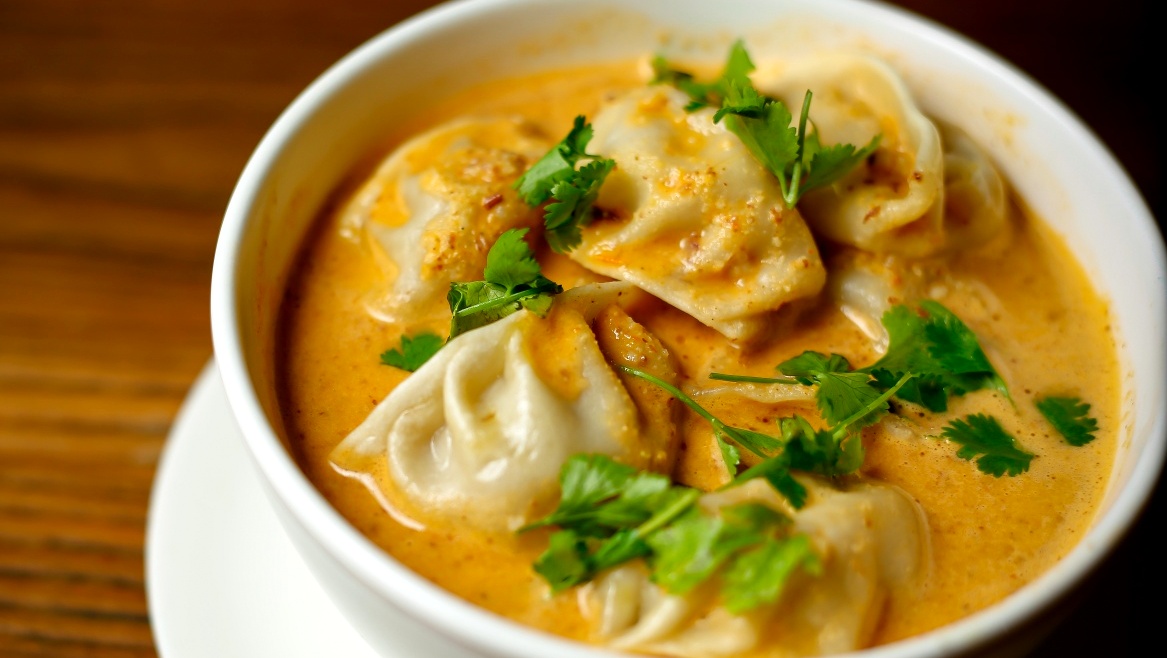
Sun-Drying
- Preserving Ingredients: Sun-drying is a traditional method for preserving ingredients like tomatoes and lentil balls (Masyaura), used in various soups and stews to add a concentrated burst of flavor.
Stir-Frying
- Quick Cooking: Stir-frying vegetables and spices at a high temperature for a short period, as in the making of Tarkari Jhol (vegetable stew), helps retain their texture and nutritional content.
Use of Traditional Cookware
- Clay Pots and Iron Pans: Cooking in traditional Nepali cookware, like clay pots and iron pans, can impart a unique flavor to the soups and stews and is believed to enhance the overall nutritional value.
These cooking techniques are not just about preparing food; they embody the essence of Nepali culture and its relationship with nature. The methods, often time-honored and passed down through generations, contribute significantly to making Nepali soups and stews not just nourishing meals but also a celebration of Nepal's rich culinary traditions.
Suitable for All Skill Levels: Nepali Soups and Stews
Nepali soups and stews stand out not only for their rich flavors and cultural significance but also for their accessibility to cooks of all skill levels. Whether you're a beginner in the kitchen or a seasoned chef, these dishes offer a range of complexity and adaptability, making them perfect for anyone interested in exploring Nepali cuisine.
Beginner-Friendly Recipes
- Simple Ingredients: Many Nepali soups and stews are made with readily available ingredients, reducing the intimidation factor for beginners.
- Straightforward Techniques: Dishes like Dal Bhat (lentil soup) and Aloo Tama require basic cooking techniques like boiling and simmering, making them great starting points for novices.
Intermediate Challenges
- Balancing Flavors: For those with some cooking experience, Nepali cuisine offers the opportunity to learn the art of balancing a variety of spices and flavors, as seen in Thukpa or Kwati.
- Experimenting with Ingredients: Intermediate cooks can enjoy experimenting with traditional ingredients like gundruk or different types of lentils and beans, adding depth to their culinary repertoire.
Advanced Culinary Adventures
- Fermentation Techniques: Advanced cooks might delve into the art of fermentation, making traditional ingredients like gundruk or sinki from scratch.
- Complex Dishes: Preparing multi-component dishes like Jhol Momo (dumplings in soup) offers a more complex challenge, requiring skill in both dumpling making and soup preparation.
Universally Enjoyable
- Adaptability: Nepali soups and stews can be easily adapted to various dietary preferences, including vegetarian, vegan, or gluten-free options, making them suitable for a wide audience.
- Learning Cultural Context: Cooking these dishes provides an opportunity to learn about the cultural context and history behind them, adding an enriching layer to the cooking experience.
Nepali soups and stews are not just about the end product but the journey of making them. They offer an accessible entry point into Nepali cuisine for beginners, a playground of flavors for intermediate cooks, and a depth of technique for advanced culinary enthusiasts. No matter the skill level, these dishes promise a rewarding and delicious experience.
Experience Nepal’s Flavors at Home
Bringing the diverse and rich flavors of Nepal into your own kitchen is an exciting culinary adventure that can transport you to the heart of the Himalayas, right from the comfort of your home. Whether you're a seasoned cook or a curious food enthusiast, the unique and vibrant taste of Nepali soups and stews offers a delightful experience that is both gratifying and accessible.
Start with the Basics
- Essential Spices: Stock your pantry with Nepali staples like cumin, coriander, turmeric, ginger, and garlic. These form the base for many traditional recipes.
- Lentils and Beans: Dal (lentils) is a cornerstone of Nepali cooking. Having a variety of lentils can help you create dishes like Dal Bhat and Kwati.
Explore Regional Recipes
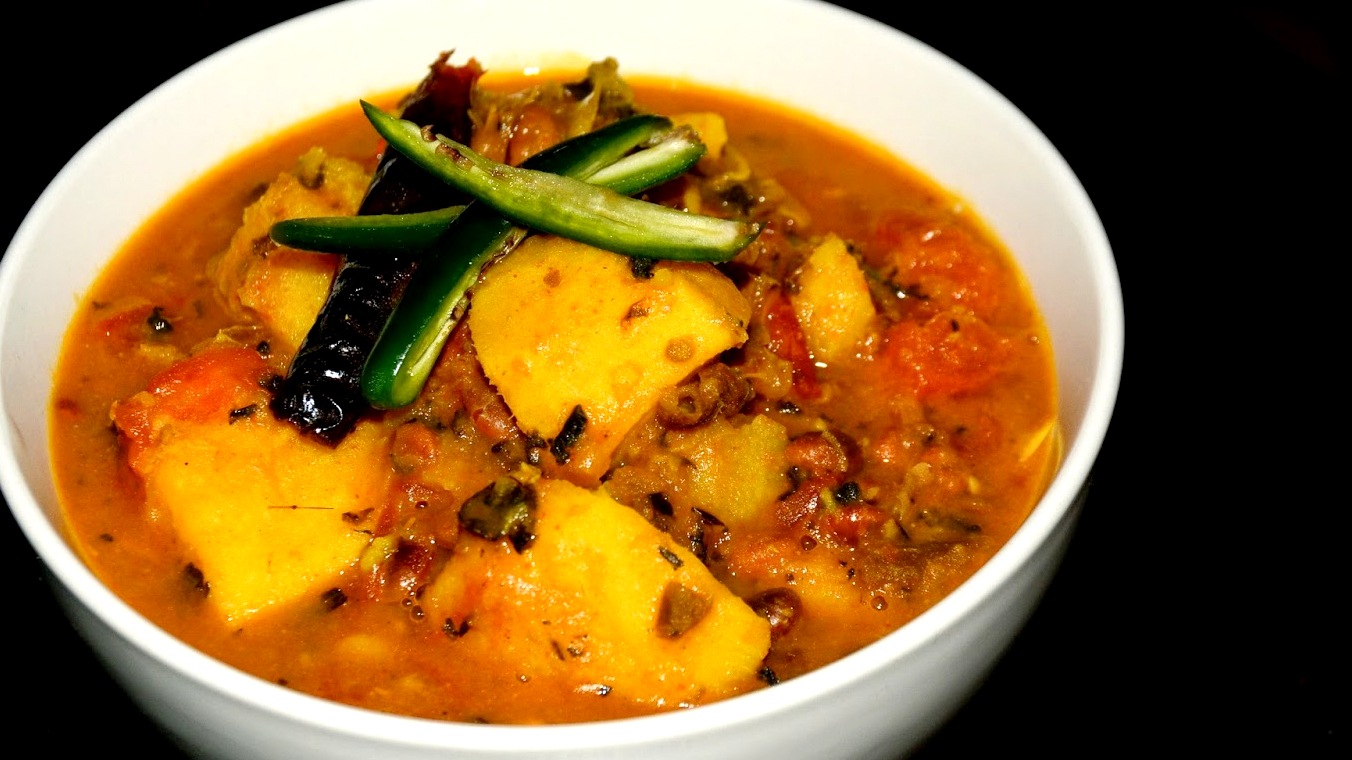
- Try Different Soups: Each region of Nepal has its own specialty. From the Thukpa of the Himalayas to the Tarul Ko Jhol of the Terai, trying different regional recipes can broaden your culinary horizons.
- Vegetarian Options: Nepali cuisine offers a plethora of vegetarian dishes, rich in flavors and nutrition, such as Aloo Tama and Gundruk Ko Jhol.
Cooking Techniques
- Learn Slow Cooking: Embrace the art of slow cooking to bring out the rich flavors in stews.
- Experiment with Fermentation: Try making fermented foods like gundruk at home to add a unique Nepali touch to your dishes.
Adapt and Personalize
- Adjust the Heat: Nepali food can range from mildly spiced to very hot. Adjust the level of chilies and spices according to your taste.
- Incorporate Local Ingredients: Feel free to use locally available vegetables and meats as substitutes, which can bring a delightful twist to traditional recipes.
Connect with Nepali Culture
- Cooking as a Cultural Experience: Learning about the history and tradition behind each dish can make your cooking experience more enriching.
- Invite and Share: Nepali cuisine is about community and sharing. Invite friends or family to enjoy these dishes, enhancing the experience through shared enjoyment.
Experiencing Nepal's flavors at home is about more than just cooking; it’s about embracing and exploring a rich cultural heritage through its cuisine. Each dish tells a story, each flavor brings a memory, and each recipe offers a piece of Nepal to savor and enjoy.
The journey through the flavors of Nepali soups and stews is a delightful exploration of Nepal's rich culinary landscape. From the comfort of your own kitchen, you can experience the depth and diversity of this cuisine, embracing the blend of spices, techniques, and traditions that make it so unique. Whether you're a novice or a seasoned cook, these dishes offer something for everyone, allowing you to savor a taste of Nepal in every bite. And for those eager to dive deeper and learn these dishes authentically, Kathmandu Cooking Classes in Kathmandu provide the perfect opportunity. Here, you can immerse yourself in the art of Nepali cooking, guided by experts who share not just recipes but the cultural stories behind them.

